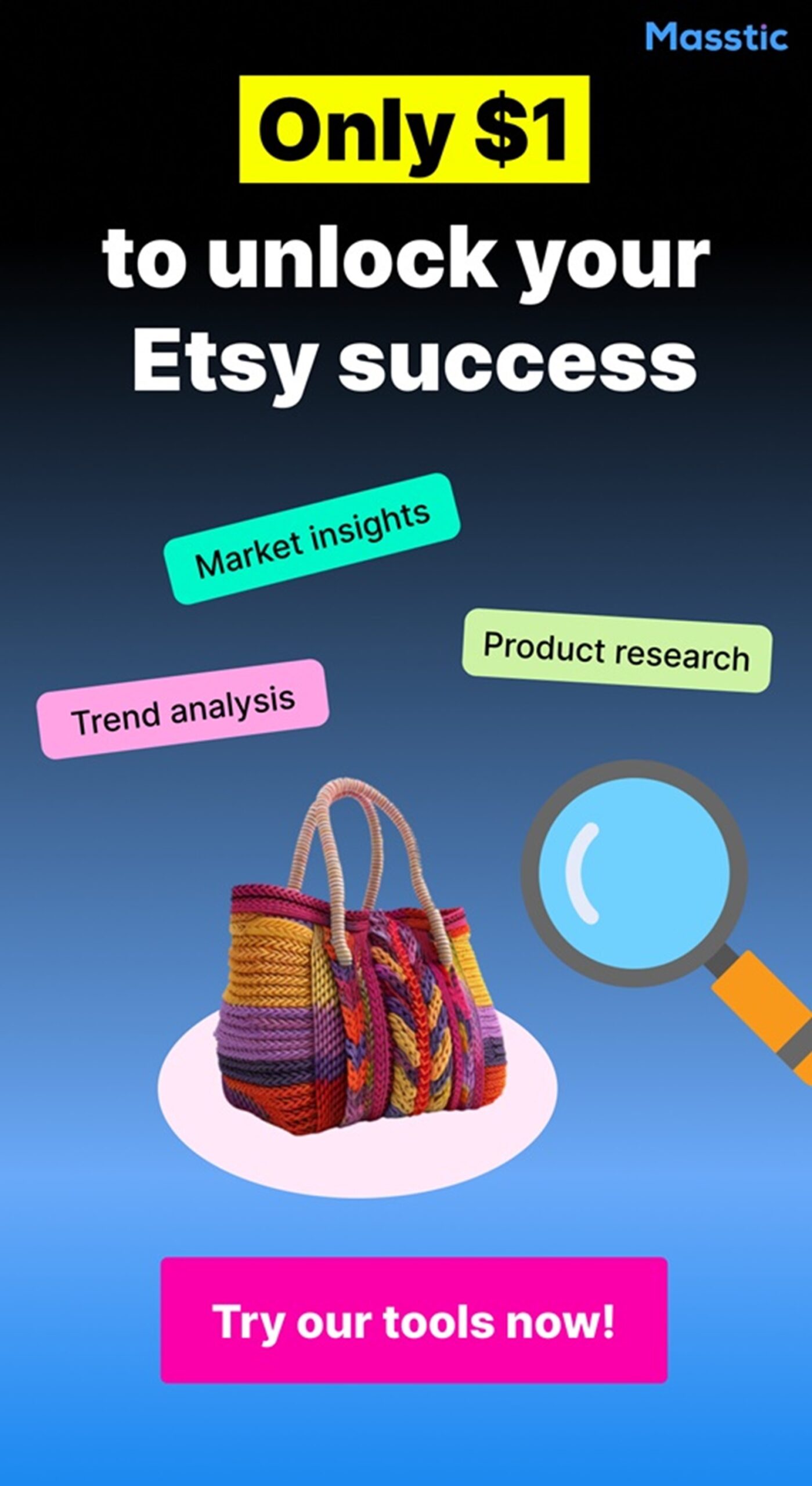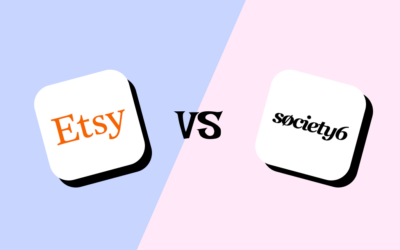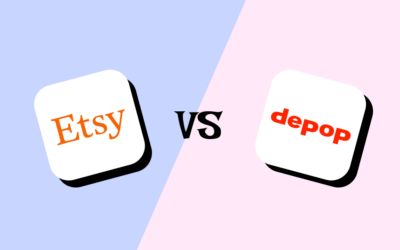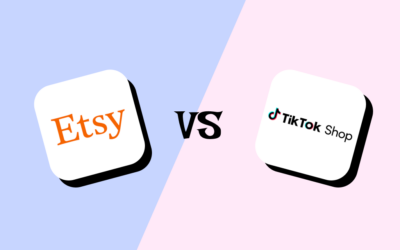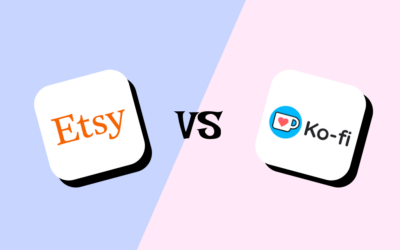Etsy vs Redbubble: Which Is Better For Your Online Store
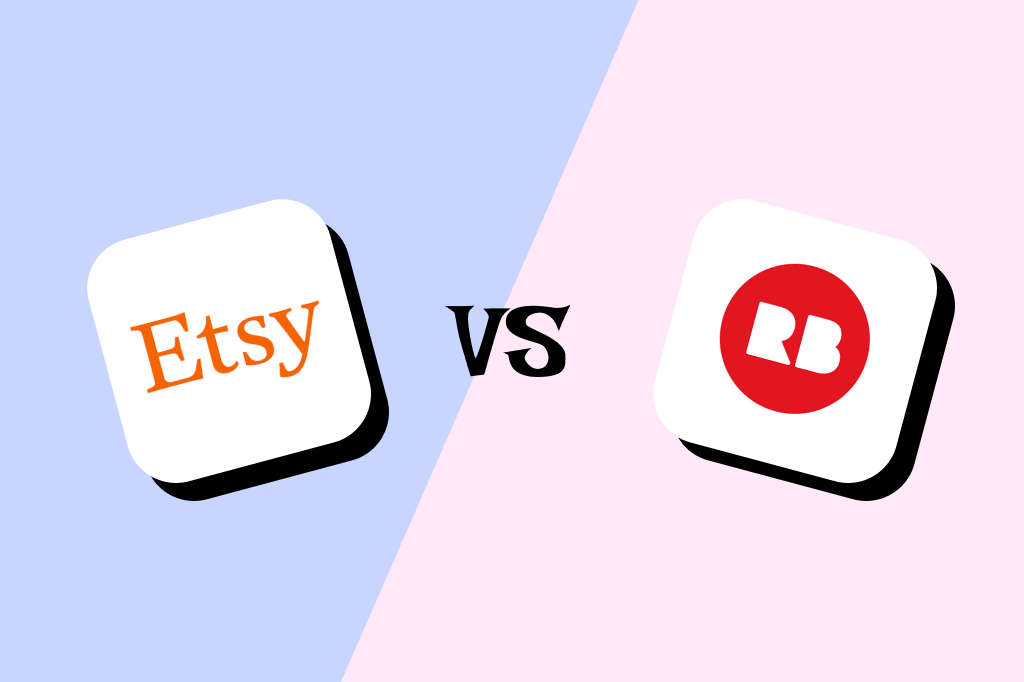
When considering where to sell handmade or custom-designed products online, the choice often narrows down to two platforms: Etsy vs Redbubble. Both have become giants in the world of ecommerce and both fulfill different roles in the markets of sellers and buyers. But which one is more appropriate for your online store?
In this article, we shall have a closer look at how Etsy and Redbubble differ based on essential factors such as setup, target market, products, and fees to sellers among others. By the end of the course, you will be able to identify which platform suits the business needs most.
1. Overview of Etsy vs Redbubble
What’s Etsy?
Etsy is an international website retailer established in 2005, specializing in artisanal and vintage products and materials. It has become a trading hub for artisans, crafters, and other small-scale business people to market their services and products through the creation of customized items. Etsy’s focus on creativity and community has endeared this site to creative business people who have been able to establish their scalability.
What’s Redbubble?
Started in 2006, Redbubble is a print-on-demand marketplace platform where artists and designers can sell their designs on apparel, accessories, Phone cases, wall art, and much more. In contrast to Etsy, Redbubble takes care of manufacturing, shipping, and customer care, which helps creators to do what they do best – create art While this model is convenient for artists seeking to generate income from their designs without having to think about the infrastructure of an online store.

What’s the Difference Between Etsy and Redbubble?
Although Etsy vs Redbubble target creative business people, they have different functions and users. Here’s a quick overview of the key differences:
| Aspect | Etsy | Redbubble |
| Ease of Setup | Demands higher engagement in the process of creating and maintaining listings. | Limited and passive involvement which primarily included design uploading. |
| Audience | Targets buyers looking for products made by hand, second hand, and non-duplicable. | Attracts design enthusiasts looking for artistic prints on various products. |
| Products | Offers a wider selection of items, particularly those created by hand as well as antique goods. | Specializes in print-on-demand products. |
| Seller Fees | Listing fees, transaction fees, and payment processing fees apply. | Operates on a royalty-based model with no upfront fees. |
| Payment Methods | Accepts a number of payment methods, including credit cards and online payment services such as Paypal. | Mostly uses PayPal or bank transfer as a channel of paying artists. |
| Integrations | A wide range of integrations with ecommerce platforms and marketing tools offered. | Relatively few and mostly concerns itself with sharing links via social networks. |
| Customer Service | Provides robust support for sellers. | Handles all customer inquiries, freeing artists from customer service tasks. |
| Shipping & Delivery | The sellers directly handle the shipping and delivery of their products. | Redbubble takes full responsibility for delivering the products to the customers. |
2. Etsy vs. Redbubble: Detail Comparison
2.1 – Ease of Setup
| Criteria | Etsy | Redbubble |
| Setup Process | Require to create product listings, price them, and organize the stock. | Easy to use as artists simply upload their designs and the rest is done by the platform. |
| Time Required | Longer setup time as time is required to create detailed listings and manage inventories. | Fast deployment; only designs have to be uploaded. |
| User Interface | More sophisticated, and comprising numerous seller applications and configurations. | User-friendly, with a focus on design uploads. |
| Customization | Full control over customization of appearance and listed products within each shop. | Restricted to choice of products and design transfer only. |
2.2 – Audience

| Criteria | Etsy | Redbubble |
| Buyer Demographics | Mainly middle-aged individuals seeking one-of-a-kind, artisan, and pre-owned products. | A younger generation who loves artistic and new styles. |
| Geographic Reach | Worldwide markets, particularly in North American and European regions. | Worldwide, with a specific focus on the United States, United Kingdom, and Australia. |
| Customer Behavior | Purchasers demand much information about offered products and a highly individual approach. | Consumers actually desire novelty on staple products, and there is less focus on customization. |
| Purchase Motivation | Aimed at the fact that products are unique and made by hand. | Driven by design aesthetics and product differentiation. |
2.3 – Products
| Criteria | Etsy | Redbubble |
| Product Range | Wide range of handmade, vintage, and craft supplies. | Focus on print-on-demand items like clothing, accessories, and home decor. |
| Customization | High in the sense that the sellers are able to order products with specific features to suit the buyers. | Limited to a number of designs only, customization is performed only at the design stage. |
| Inventory Management | Sellers are also responsible for managing inventories. | No need for inventory control as the production is taken care of by Redbubble. |
| Product Quality Control | Vendors have control on the quality of the product which is bought. | Quality assurance is done by Redbubble partners who oversuggest production. |

2.4 – Seller Fees
| Criteria | Etsy | Redbubble |
| Listing Fees | $0.20 per item listing. | None; only royalties apply. |
| Transaction Fees | 5% of the sale price. | None; Redbubble takes a cut from the product base cost. |
| Payment Processing Fees | 3% + $0.25 per transaction. | None; included in Redbubble’s commission. |
| Subscription Costs | Optional Etsy Plus subscription for advanced features. | None; Redbubble is free to join. |
2.5 – Payment Method
| Criteria | Etsy | Redbubble |
| Payment Options | Credit cards, PayPal, Etsy Gift Cards, Apple Pay. | PayPal or direct bank transfer. |
| Payout Frequency | As often as the seller wants: Weekly, biweekly, or monthly. | Monthly payouts, typically on the 15th of each month. |
| Currency Options | Supports multiple currencies. | Purchases are made at the local currency of the artist. |
| Payment Processing Time | Typically 3-5 business days. | Usually processed within a few days after the payout date. |
2.6 – Integration

| Criteria | Etsy | Redbubble |
| Ecommerce Tools | Integrates with Shopify, WooCommerce and many others. | Not very extensive, mostly with social networks. |
| Marketing Tools | Integrates with Google Shopping, Facebook Advertising and email marketing. | Social media sharing buttons provided. |
| Analytics | Fully customizable analytics and reporting options. | Simple analysis made available for design accomplishment. |
| Third-party Apps | Huge app store for other features and accessories. | Limited to inbuilt features of the chosen platform only. |
2.7 – Customer Service
| Criteria | Etsy | Redbubble |
| Support Availability | 24/7 support via chat, email, and phone. | Email support with a focus on customer inquiries. |
| Community Forums | An online platform where sellers can freely engage in the discussion. | Fewer interactions with the community; customer-oriented. |
| Help Resources | Well-developed help center and seller handbook. | E-mail help center specialized in product and orders only. |
| Response Time | Typically within 24 hours. | The duration of the procedure may vary, but commonly it takes only a few days. |
2.8 – Shipping & Delivery
| Criteria | Etsy | Redbubble |
| Shipping Responsibility | Sellers have complete control over their shipping process. | Redbubble takes full responsibility for delivery processes. |
| Shipping Costs | Shipping costs are usually both determined and controlled by the sellers. | Transport costs are incorporated into the product costs. |
| Delivery Time | It depends on the seller and the chosen method of delivery. | Standard delivery times are offered by Redbubble. |
| International Shipping | Carried out by the seller and costs and time might also differ. | Offered through Redbubble – international shipping available. |
3. Etsy or Redbubble: Which is Better?
| Platform | Pros | Cons |
| Etsy | – Bigger and mature marketplace with a lot of traffic.- Extensive product offerings that go beyond the print-on-demand services.- A wide range of integration opportunities and promoting instruments. | – Higher fees than traditional hosting and has to be closely managed.- Competition is high due to the significant number of sellers in the market.- Customer service, shipping, and logistics are all tasks done by the sellers. |
| Redbubble | – Easy, non-interventionist platform with built-in production and delivery.- No fee required, with payment made only from the resulting royalties.- Redbubble deals with all customer acquisition and management, keeping artists away from such tasks. | – Does not include handmade or vintage products – the only products allowed are those that are printed on demand.- Lesser originality available in products and stores design.- Reduced operating income because Redbubble operates on commission. |
Etsy is best suited for:
- Crafters who sell handmade goods, vintage goods, or supplies that are used in crafting.
- Business people seek higher levels of customization.
- Shop owners and sellers who would prefer more customization over their shop and the items they offer.
Redbubble is best suited for:
- Design-orientated artists rather than product oriented.
- Those who want to sell products without having to be heavily involved in selling.
- Authors who raise concerns about handling shipping, customer support, or stocking.
If you are looking for more options, check out 14 Etsy Alternatives to Sell Your Crafts Online in 2024
Conclusion
In conclusion, it can be said that Etsy vs Redbubble choice comes down to the specifics of selling. If you plan to sell handmade or vintage products and are willing to spend more time overseeing your online business, Etsy will better suit you. On the other hand, if you are an artist who does not want the bother of having to organize the production of your work, the purchase and sale of equipment, as well as client relations, then Redbubble may be the perfect marketplace for you.
If you require any additional assistance, you can contact Masstic, and our support service will be happy to help. Also, be sure to follow the updates and useful information about ecommerce – subscribe to our blog!
FAQs – Etsy vs Redbubble
Can I sell on both 2 platforms: Etsy vs Redbubble?
Yes, there are many sellers who are using both the channels to target a wider market. Etsy lets you sell tangible items, and on the other hand, Redbubble deals with printed assortments.
Which platform is better for beginners: Etsy vs Redbubble?
It is slightly more complex to start on Etsy especially for new players in the online marketplace. It demands from you to perform a number of functions related to the selling process while dealing with such responsibilities as stocks, production, and deliveries. This hands-on involvement can be a challenge for newcomers. However, Etsy offers a variety of tools and a friendly community that will help you overcome these issues and develop your shop successfully.

